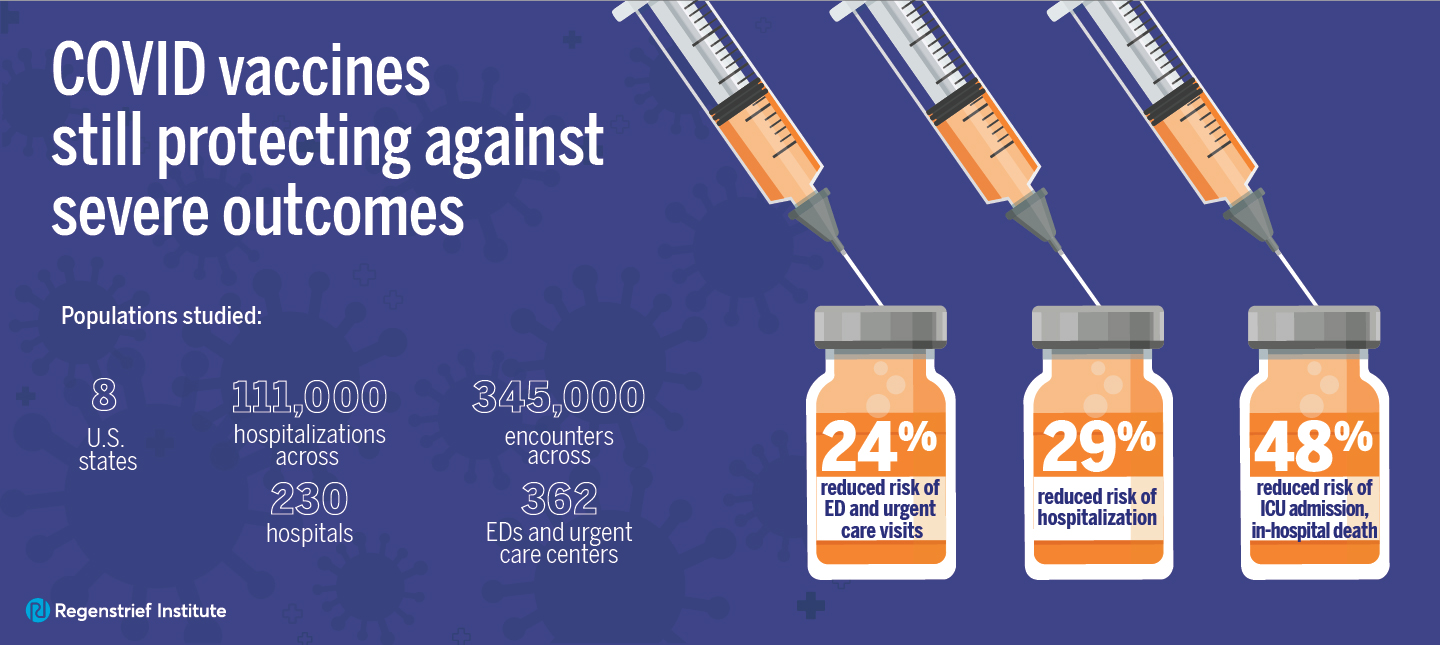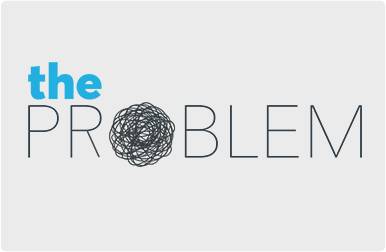Transcript
Phil:
Hey, everybody!
All this season, we’ve been talking about life with Alzheimer’s and dementia, featuring perspectives from society, health systems, the patient and the caregiver.
There’s a pretty natural question that arises after all of that: “What can I do to protect my brain and reduce my risk?”
While there’s no way to completely prevent Alzheimer’s, there are some good habits and behaviors that scientists have found can reduce your risk, and possibly protect your memory
This episode, we’re focusing on two habits that go together like biscuits and gravy: diet and exercise.
Welcome to The Problem. I’m your host, Phil Lofton.
[Theme]
NiCole Keith:
So if you had a pill that could improve physical health outcomes, emotional health outcomes, that could reduce blood pressure, that could, improve depression, if that could improve your, ability to, make executive decisions, that could make you perform better at work and be happier at home, wouldn’t everybody take it? That’s, exercise is that pill and every physician should be prescribing it.
That’s NiCole Keith, Regenstrief Scientist, and one of the leading American voices on physical activity. She’s the president-elect of the American College of Sports Medicine, and the Vice President of the National Physical Activity Plan Alliance.
Exercise is a word that, for many of us, immediately makes us bristle. Maybe it makes you think of broken new years’ resolutions or gyms full of loud, clanging machines and louder gymgoers, or sore muscles and sweat. But Dr. Keith says a lot of the unpleasantness that we associate with exercise might not really apply to all physical activities that can improve our health.
NiCole Keith:
However, I think that exercise is kind of gotten a bad rap because when people think about exercise, they think about sweating and “I have to change my clothes and it’s gonna hurt and at least be uncomfortable and people might judge me.” And we know that just increasing your physical activity throughout the day provides benefit. So just walking, at a regular speed, increasing, increasing your steps throughout the day, cleaning your house, playing with your kids, walking your dog, all improve health outcomes and not just physical health, but emotional health as well.
Phil:
There are lots of reasons that we might have for avoiding the gym, or even the stairs. Many of these can be good reasons – for example, you can’t climb the stairs due to knee pain, or you can’t use equipment at the gym because you don’t know any exercises for it. In fact, we’ve even talked this season about how the design of some public spaces discourages activity for seniors.
But, like Dr. Keith says, taking any opportunity to get up and get active whenever you can does make an impact on your health, and while it makes a big impact on your heart’s health, that impact extends well past your cardiovascular system into your brain.
NiCole Keith:
Sure. So, what many people don’t realize is the brain vascular works almost the same as the heart vasculature. And so, anything that would affect the, the heart negatively would affect the brain as well.
Phil:
And that’s where we get that phrase, “What’s good for the heart’s good for the brain,” that people have been tossing around so much?
NiCole Keith:
Well it depends on what you’re talking about because physically, yes, that’s true, but emotionally as well
Phil:
Oh that’s really interesting. Do you want to expand on that?
NiCole Keith:
I can. So, if you think about exercise (and that’s all I think about cause I’m an exercise scientist), and you think about what exercise does for your heart. it clears up the vasculature, makes your heart muscles stronger. It increases blood flow. And so physically it does the same thing for the brain. But if you think it about emotional disorders like depression, depression is also linked to improving depression, is also linked to physical exercise. And physical exercise actually makes you emotionally better too. And emotion is linked to the brain, but you know, the way we love that’s linked to our hearts.
In a conversation with Regenstrief scientist Dan Bateman, that link between the health of the heart and the health of the brain came up again, both with regards to exercise and to diet.
Dan Bateman:
So we’re finding out that link is a stronger and stronger. a lot of the things that we do for, that affect our blood vessels. So, behaviors which include different lifestyle behaviors such as following a Mediterranean diet, avoiding red meat, avoiding low salt foods, exercising regularly, avoiding a sedentary lifestyle. All of those things affect our cardiovascular health, right? So that affects how much plaque builds up on our blood vessel walls. it also, things like high cholesterol, high blood pressure, high blood sugar for people with diabetes. All of those things cause damage to blood vessels and just like they cause damage to blood vessels in the heart, and if you get a blockage in the, in the heart and the coronary artery, then you would have a heart attack, you can have a stroke in the brain. but a lot of times people don’t have strokes, but they have tiny blood vessel damage that we call small vessel ischemic disease in the brain, or small vessel, cerebrovascular disease. and what that does is, it’s tiny blood vessel damage that’s accumulating, that causes damage to the brain and affects people’s ability to, do different things. And we think it, there may be some link between that and developing Alzheimer’s disease. And we know that people with high blood pressure, high cholesterol, high glucose, and those with other risk factors are at much greater risk for developing Alzheimer’s disease, than others who don’t have those symptoms.
Phil:
But what does a good, brain healthy diet look like?
Here’s Dan Clark, a Regenstrief scientist and medical sociologist, who’s done a lot of work on the ways that diet and health interact.
I spoke with him to learn more about a special diet that he’s been studying in his recent work.
Some of the recent work that you’ve had has focused on a very specific type of diet. Can you tell me about that?
Dan Clark:
Oh yeah. It’s a spin on the mind diet is the work that we’ve started, pursuing here now with older adults that are very high risk for Alzheimer’s disease. and that work was started at Rush and really, from a trial that was done in Europe. they mesh together the Dash Diet, which is the hypertension diet. So that’s a diet that’s intended to reduce the risk of hypertension, or improve its management for people who have hypertension. And they paired that with the Mediterranean Diet, and in to get to this thing they call the Mind Diet. It’s very much like the two of those diets, but it emphasizes polyphenol foods that are very high in polyphenols and polyphenols have a very strong effect on reducing inflammation and oxidative stress. And those are two pathways through which you get cardiovascular disease and you get Alzheimer’s disease. So if every day for years you are consuming foods that lower the damage from oxidation and reduce inflammatory levels, then it is very likely you are reducing or delaying cardiovascular disease for sure. We know that it seems Alzheimer’s disease, and other dementias as well.
Phil:
So why is inflammation so closely linked to Alzheimer’s disease?
Dan Clark:
Well, the inflammatory process affects all aspects of the body. And there’s some thinking that inflammation can cause some blood-brain barrier leakage. And so, then the inflammatory process that’s taking place in your body is now taking place in your brain and that can then lead to some of the downstream effects of increased plaques that are associated with Alzheimer’s disease and cognitive impairment. That’s one of the pathways. A certainly there’s others. But that’s one of the key things.
Phil:
One of the things that I’ve heard a few times in these interviews from different guests is “What’s good for the heart is good for brain, what’s good for the heart is good for the brain,” and is the Mind Diet just another way that that plays out?
Dan Clark:
It is certainly improving blood pressure levels. That hypertension right now is a hot topic with Alzheimer’s disease and hypertension is really driven by smoking, inactivity, and high fat, high sodium foods, that’s known. And the Dash Diet reduces those sodium and high fat foods. The Mind diet adds the high polyphenol foods, and together that can affect blood pressure, make it much, much more manageable and even reduce it. Also stabilized blood sugar, both of which, high blood sugar, and high blood pressure, have this sort of continuous, impact on brain health. And so keeping those under control is critical to maintaining solid brain health. And so, it’s a pathway.
One concern I have is that we are, we as scientists want to do interventions in high-risk folks and show an impact. But with these behaviors, one concern I have is that the damage is cumulative. It isn’t a one year intervention, probably, that makes the difference for people who are, are approaching older age, but rather it’s a lifetime of foods and activity decades long that have affected their brain health and structure and put them maybe at risk or not at risk for Alzheimer’s disease and other dementias. And so can we, in our short funding cycles that allow a one year… a one-year lifestyle intervention is a long lifestyle intervention. Most of them are like six months. But even if we do a one-year intervention where we change diets over and we change activity level to where someone is physically active, is that really sufficient to show an outcome in that short period of time? I’m concerned it’s not and that the message could come out of the science world that these factors aren’t able to delay Alzheimer’s or dementia. That isn’t really going to be the case. We know it and we know at this point that they can. the question is how intense do you have to make the change? For how long do you have to make the change? And I’m, I’m concerned it has to be sort of a lifestyle thing. I mean a lifetime thing. So that’s why we’re really looking at mid-life. Can we get folks with hypertension, high blood sugar, other risk factors, can we get them into these activity, physical activity and dietary programs at that point and help them sustain those changes so that as they age, they’ve had years of these healthier behaviors and protected their brain health all the way through in the process.
Phil:
So, I’ve tried a few different trendy diets in my life and I’m certainly not calling the Mind Diet that, but you know, I’ve tried Whole 30, I’ve trolled, tried Paleo, Keto a few different ones and from time to time you try one and it just doesn’t stick either because like the food’s not that great or it’s just too restrictive. But the Mind Diet, the food is actually really tasty. So what do you think will be an effective intervention to actually make people stick with the Mind Diet? What are some of the ways that you’re trying to get people to stick with the Mind Diet and make it more appealing to them as a long-term, Not just one-year, but lifetime habit?
Dan Clark:
Yeah, that’s a super good question and really tough problem. So food preferences are established very early in life. taste and texture. All humans have a preference for salt, fat, and sugar. I mean, just evolutionary. We had, we had to have calories. when calories are scarce, you want to find dense calories. and so fat and sugar give you a lot of calories in a small quantity. And that was something that we needed to survive when we were hunter-gatherers. now we don’t need, we’re not hunting and gathering. It’s finding us. It’s every, the salt, salt, fat and sugar are everywhere. We don’t need to go look for it.
So, how to help someone make these changes? Well, what we’re doing is giving people options. So we, we know it’s extraordinarily difficult to change preferences. Preferences can change, over time. You can develop new habits, new experiences, get used to things. I now consume coffee every day. A decade ago I wouldn’t touch this stuff. So these things change. but, but to get someone started, we need to meet them where they are. So, so what are your preferences right now for particular textures, foods, and things. And, and what we’ve done is create a sort of online ordering system so people can see a variety of foods that we’ve preselected as meeting a Mind Diet kind of criteria. So, they’re very high in polyphenols. The foods that we’ve created are a thousand milligrams of polyphenols, whether it’s a diet, whether it’s a meal or a snack, if you consume the whole things, we make sure it’s at least a thousand milligrams of polyphenols.
Phil:
And is that the recommended daily dose of…
Dan Clark:
There is no recommended dose, but what we, what we looked through some lab-based trials, some of them were mouse trials, and figured out what is the dose that was in those trials that showed an effect on say, blood pressure. And even some of these showed an effect on amyloid plaques, which are the plaques associated with Alzheimer’s disease. And we worked backwards and figured out, “Well, we gotta get this way up” and this is, this is tenfold more than the average American consumes in their daily diet. So just one of the meals or snacks that we’re producing gives you 10 times more polyphenols then all day long in the average American diet.
Phil:
Dietary and exercise behaviors, though, are really affected by a lot of factors that can be outside of our control as individuals.
Our ethnicity, our zip code, our income, educational level, and a host of other factors can play a big part in our diets and our ability or access to exercise opportunities.
We call these factors the social determinants of health, and Dr. Clark had more to say about them.
So to talk about populations that may be more affected by these issues than others. What disparities have you seen in your work and in the literature with regards to Alzheimer’s disease and dementia?
Dan Clark:
Yeah, so, this is maybe not known, but the top risk factor worldwide for dementia and Alzheimer’s disease is low education. In terms of population attributable risk. So there are enough folks with low education in the world, that that happens to be the largest population attributable risk factor. So it contributes the most worldwide to what we see in the prevalence of Alzheimer’s disease and dementia. In the United States that’s not the case because we have more folks with higher education, but it’s still true that people with low education are much higher risk. That isn’t known quite why. Something, early brain structure and development from schooling has plays a role. Certainly, we know that lifestyle behaviors, so, so quality of diet, physical activity, levels of smoking are very different by education level. And in women for example, smoking is three times more prevalent those with no high school education versus those with college degree. Tremendous differences in lifestyle behaviors by education level. and so, so that is a major factor and very much associated with Alzheimer’s disease and dementia.
And then minority populations. we know African Americans are at higher risk. We don’t know if it’s because there are lifestyle differences, because there are educational differences, because there are cultural differences. We know diets do vary, that’s a factor. We know cardiovascular risk factors are higher. And, and that could be the pathway.
Phil:
From your perspective, like as, as a sociologist, you hear all of those disparities you know, you immediately ask the question, “Yeah. What role do other behaviors that, that may be associated with a given population play in this disparity?” What other sort of sorts of questions come to mind for you as a sociologist?
Dan Clark:
In terms of disparity?
Phil:
In terms of disparities? Yeah.
Dan Clark:
Well, what to do about it. You know, if you go as a sociologist, if you back up far enough, you end up at really fundamental levels and basic, early-life education, and family structure and opportunity and neighborhood environments. All of these things are, are, are affecting longitudinal trajectories of health for these individuals. And certainly, that includes Alzheimer’s disease and dementia. And so, so getting early in life, getting to the family unit, maybe getting into the neighborhood unit, putting not so much of our effort into, “Let’s help this one person be different,” but “Let’s change the unit, the family, the neighborhood” and how to do that. So, and I, National Institutes of Health funds most of our research here and NIH has struggled, or its investigators have, I’ll say, struggled to find a way to do good work, that is interventional at that more foundational level because you get into policy issues and resource allocation.
I guess if I had another life, it would be to be more of a policy-oriented scientist working on those kinds of fundamental issues and, and not just looking at individual level behaviors.
Phil:
Yeah, I was going to say like when you start talking about how you get down to those fundamentals and you have to make those big changes, it starts to sound a whole lot like public health. That starts to sound a whole lot like if you want to create an environment where a young child growing up is more likely to be physically active, more likely to have good options for healthy foods, then you’re getting into food security. You’re getting into the, the construction of sidewalks, you’re getting into bike trails, all sorts of things. And that’s so hard. It really makes this such a multi-disciplinary issue.
Dan Clark:
Yeah. It’s multilevel, so you can, you can build sidewalks, but whether or not folks use them has a lot to do with the culture and, and the environment.
So a lot of what we hear is people are uncomfortable or going for a walk in their neighborhood because they don’t feel safe. and that’s, that’s pervasive in poor communities. There’s just so many issues that are affecting what people do, and then what people do is affecting the long-term health of the nation.
Phil:
Diet and exercise can be a powerful tool for preventing Alzheimer’s, but we have to make sure that tool is available for everyone. And You can’t talk about Diet and Exercise without talking about the cultural factors or policies that might make those things more difficult for a given group of people.
Listen to our other episodes on ways to reduce risk of dementia where we talk about medications that may affect your brain, and delirium, out now, and join us next time for our season finale, where we recap everything we’ve learned.
We’ll see you then, on The Problem.
Music this episode was by Blue Dot Sessions, Broke for Free, Everlone, and Jahzaar. Our theme, and additional musical cues were written and performed, as always, by Mark Zapotec Engels.







